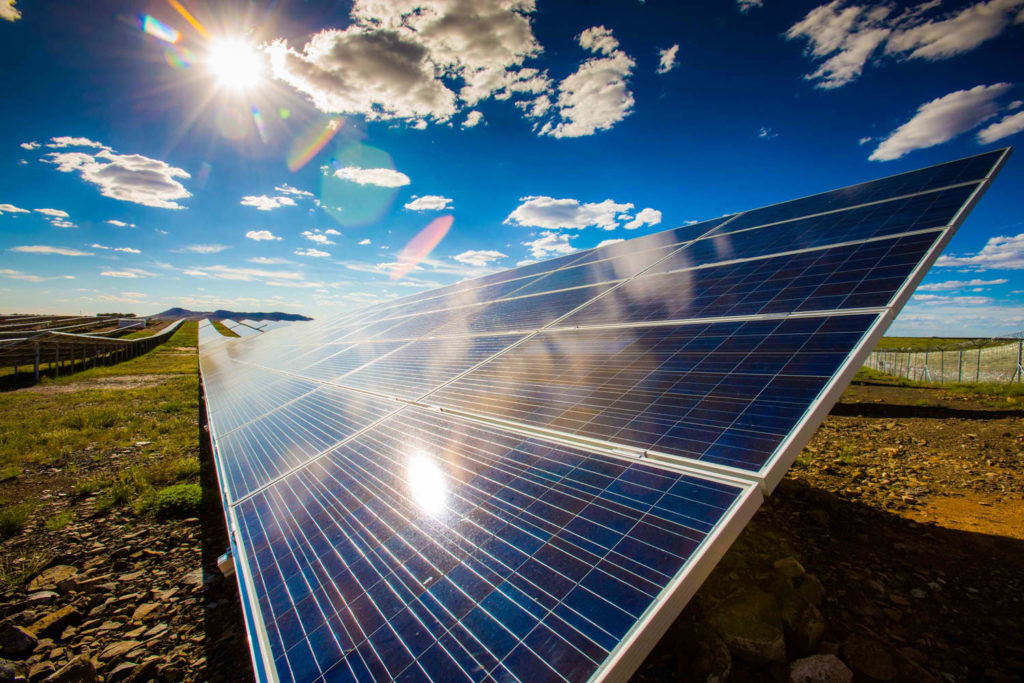Kazakhstan inaugurated a new solar power plant in Mangystau, in the Caspian country’s western region that borders the northeastern shore of the Caspian Sea, on Tuesday. The plant covers approximately 90 acres and consists of 8,000 solar panels, which regional officials hope will become a successful model for renewable energy and one of Kazakhstan’s largest.
With a capacity of two megawatts, the plant is equipped with environmentally friendly and modern equipment, and is expected to provide 300 nearby houses with electricity. The facility is the first ‘green’ facility in the Kazakhstan – a country that gets over 86 percent of its energy demand satisfied by fossil fuels, according to U.S. government data.
“Another feature of the project is that 90 percent of the components are produced in Kazakhstan,” the mayor of Mangystau, Eraly Tugzhanov said at the inauguration of the plant on Tuesday.
Valued at roughly 1.2 billion tenge, Kazakhstan’s national currency (approx. $3.6 million), the project is supported by the national government via its “Roadmap of Business 2020.” Launched in 2015, the five-year plan is aimed at supporting new business initiatives and export-oriented production.
In a country right in natural resources such as oil, natural gas, and anthracite and bituminous coal, it is not surprising that only 0.3 percent of energy comes from renewables. Yet despite the easy access to fossil fuels, Central Asia’s wealthiest country intends to generate 50 percent of its electricity from renewables by the year 2050.
Last year Kazakhstan took center stage in the world when it hosted the 2017 world’s fair, officially known as EXPO 2017 – a three-month-long exhibition that showcased hundreds of new technologies related to energy. Pavilions showcased solar-powered rickshaw carts, popular in South and Southeast Asia, to a device that generates electricity from photosynthesis within green plants.
“The main goal of the event was to draw public attention to solutions and methods that ensure the management of sustainable energy sources,” the mayor of Mangystau said about EXPO 2017 on Tuesday.
After the EXPO, held in the capital city Astana, drew to a close in September of last year, officials announced that some of the technologies presented will go online in the near future.
But EXPO 2017 was not the start of officials in President Nursultan Nazarbayev’s government thinking about going green. In 2011, it launched the Green Bridge Partnership Program. As a result, in 2012, the first renewable energy system both in Central Asia and Kazakhstan was launched in Kazakhstan’s southeastern region of Zhambyl. Following the country’s Concept for Transition to Green Economy, adopted in 2013, more than 50 solar, wind and hydropower stations have been built and launched across the country.
As of today, two solar power plants known as Burnoe Solar–1 and Burnoe Solar–2, which are located in Zhambyl, form one of the largest solar generation facilities in Central Asia. In 2017, Kazakhstan and the European Bank for Reconstruction and Development agreed to expand Burnoe Solar–2 from 50 to 100 megawatts.







 Iran's senior military leaders described the drone and missile attack on Israel on April 14 night as “successful".
Iran's senior military leaders described the drone and missile attack on Israel on April 14 night as “successful".
 The number of evacuees from flooded areas in Kazakhstan has reached 97,852 people, including about 32,856 children since March 27.
The number of evacuees from flooded areas in Kazakhstan has reached 97,852 people, including about 32,856 children since March 27.
 Iranian President Ebrahim Raisi warned Israel that it would face a "real and extensive" response if it makes any "mistake" following Tehran’s missi...
Iranian President Ebrahim Raisi warned Israel that it would face a "real and extensive" response if it makes any "mistake" following Tehran’s missi...



